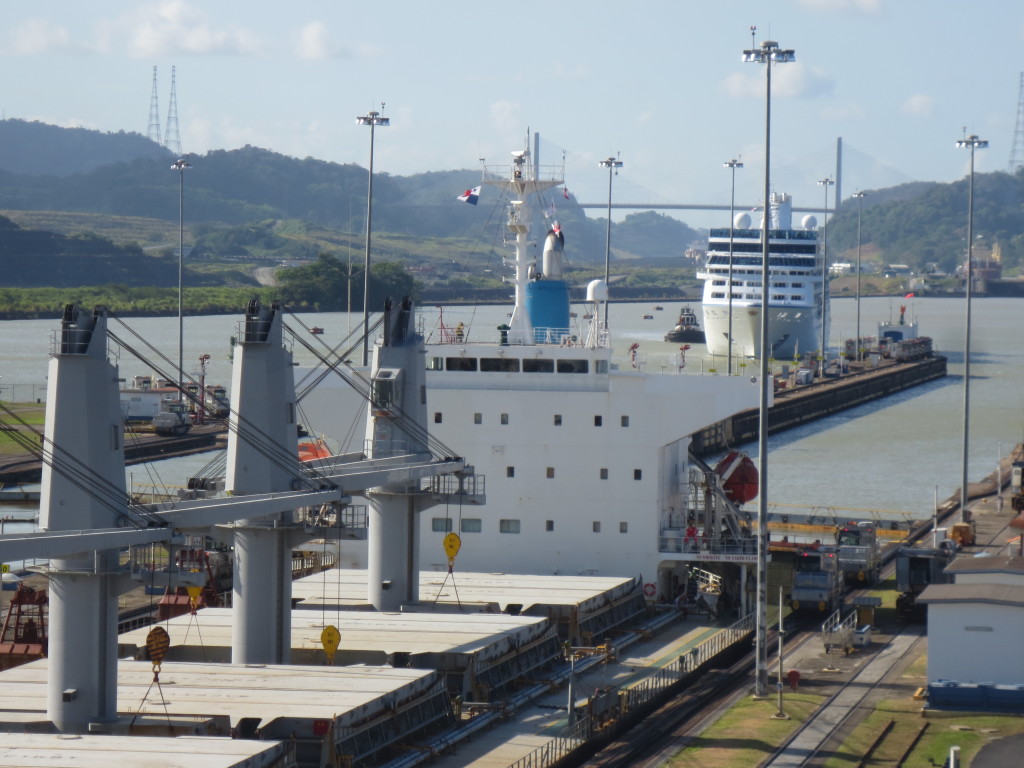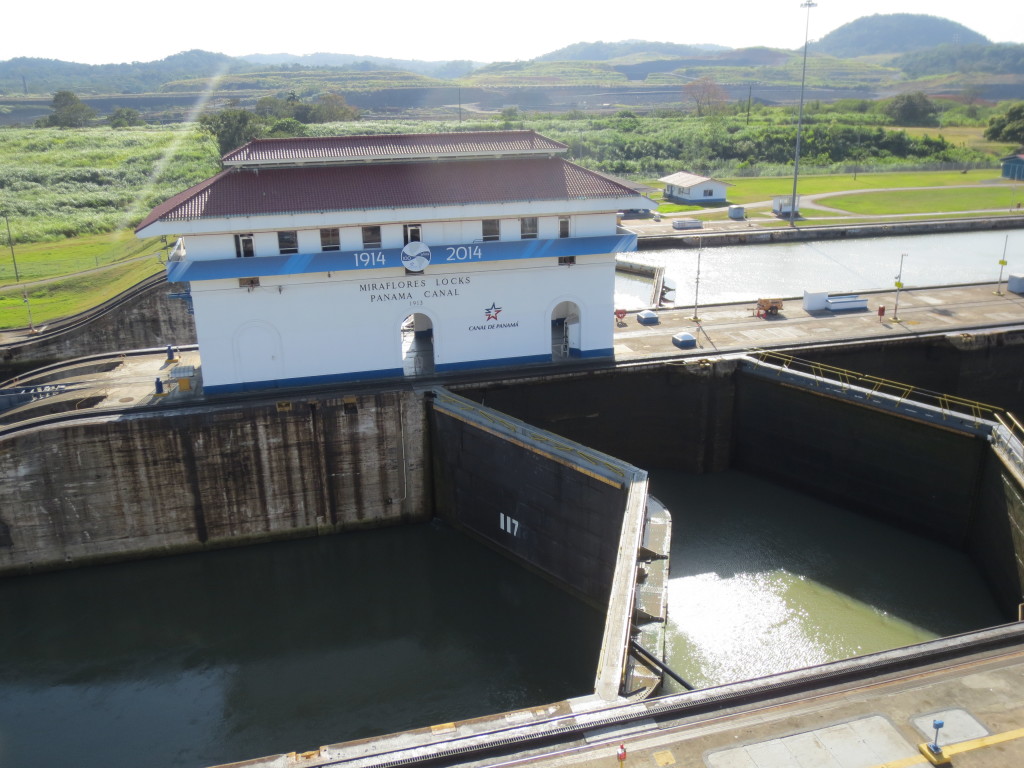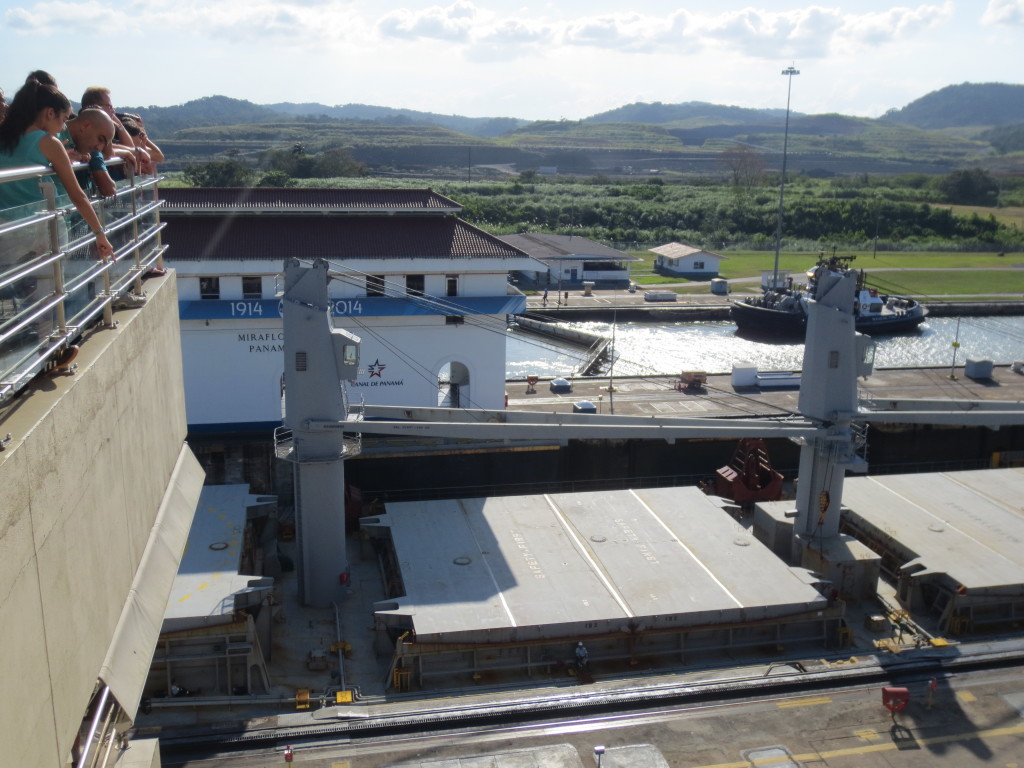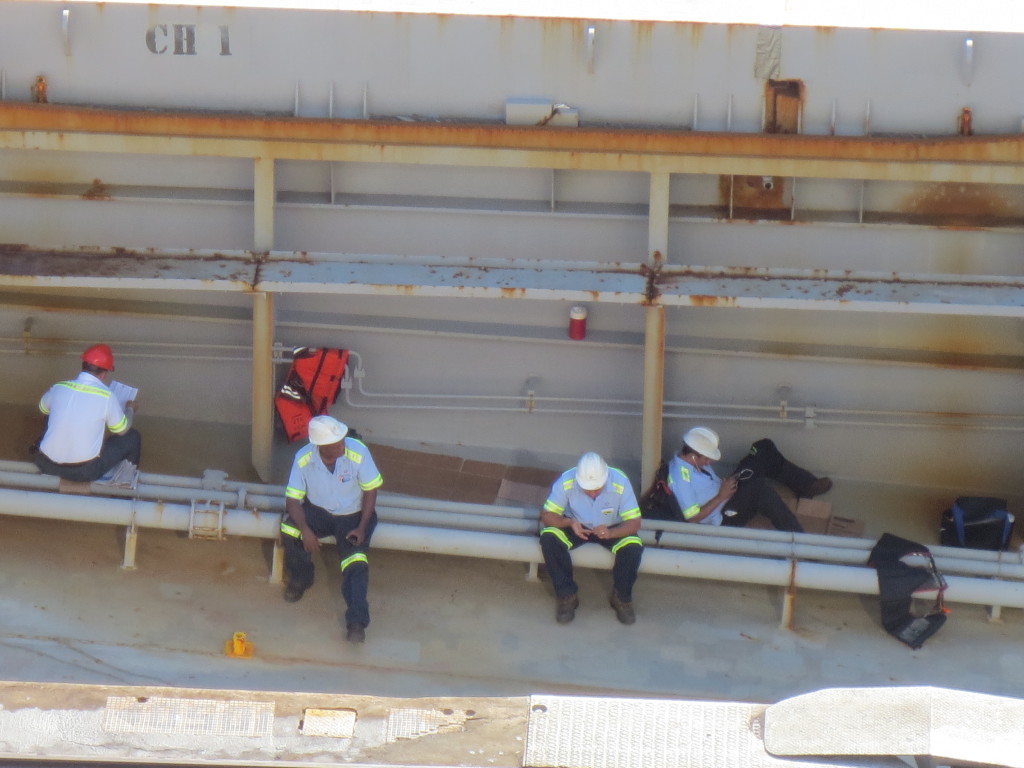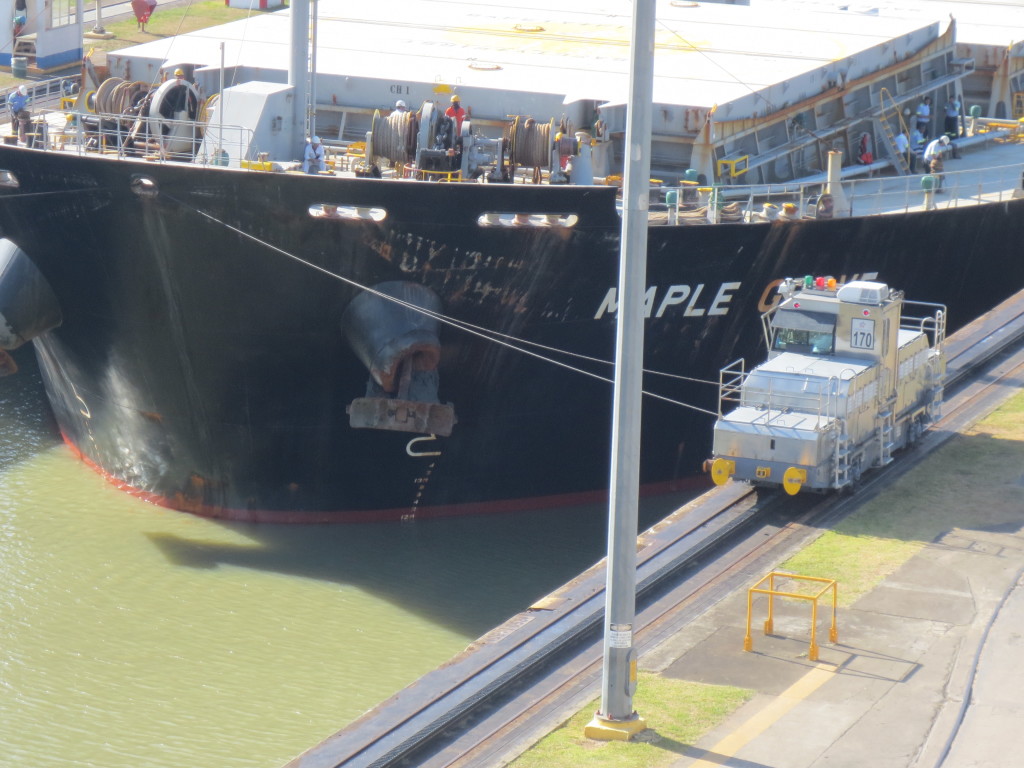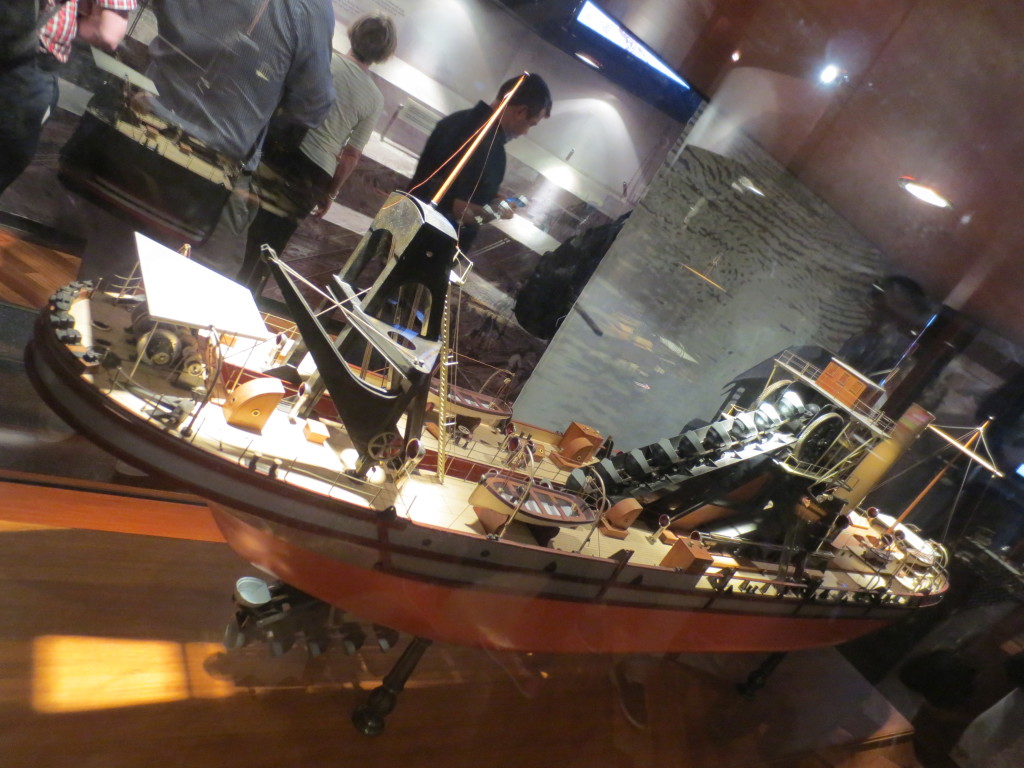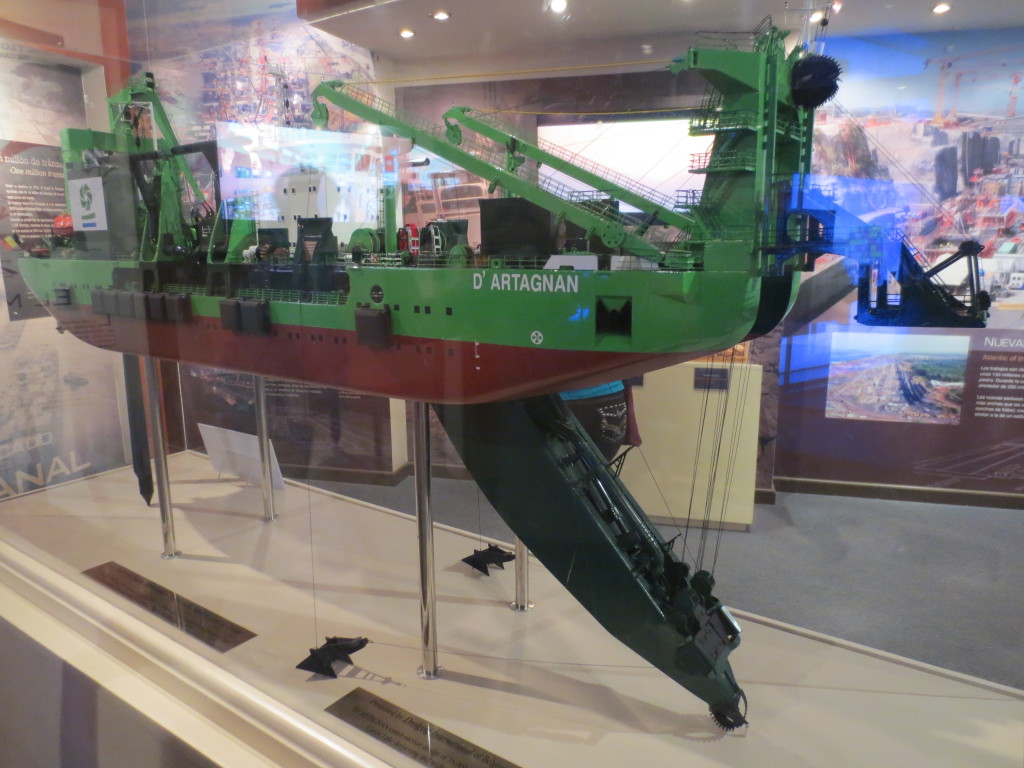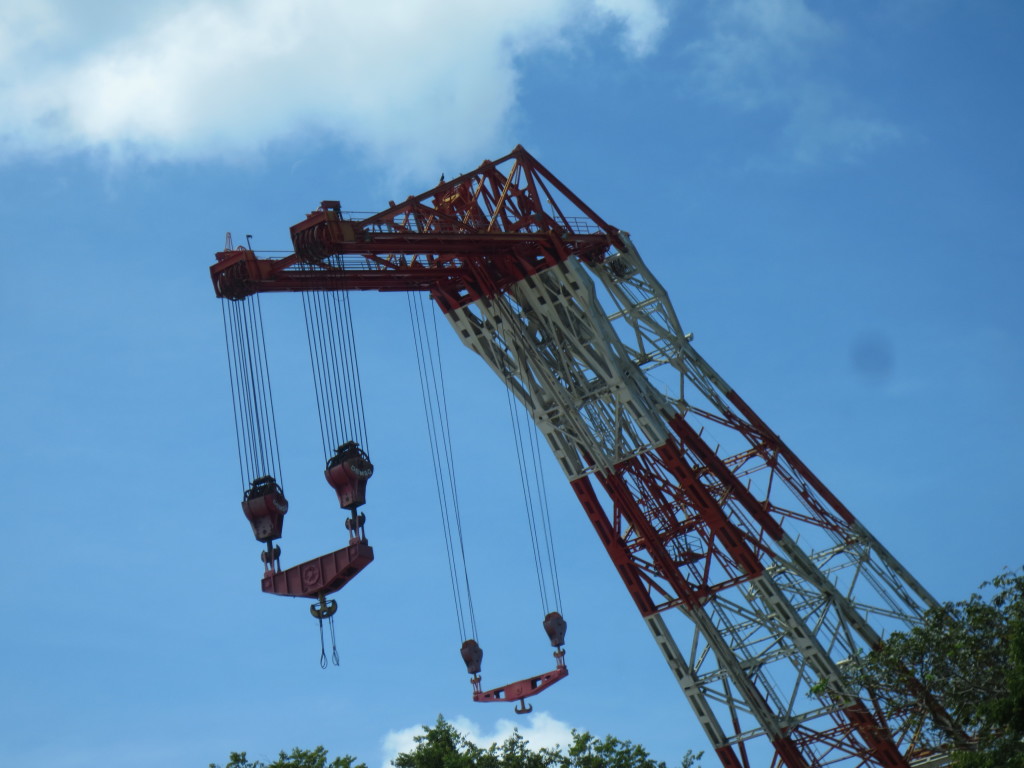The Panama Canal takes approximately 8 to 10 hours to cross with about 40 ships transiting per day. A sophisticated transit booking system provides ships with a choice between either a first-come first-served basis or a premium congestion fee to avoid the queue. The final slot each day is auctioned to the highest bidder.
We visited Miraflores Locks at the canal’s Pacific terminus which has higher gates than the Atlantic side to accommodate the Pacific’s more dramatic tidal variation. The current locks use miter gates that swing open to let ships pass, while the new locks will use rolling gates that are optimized to reduce loading and maintenance. The video of the first gates arriving from Italy is impressive, though the second set of gates is currently delayed.
Miraflores has a visitor center with a viewing deck where we watched a bulk carrier transiting the locks. There is also a simulator that makes you feel like you’re aboard a ship’s bridge transiting the entire canal in fast motion.
Panama Canal Authority workers dressed in blue uniforms with white hard hats are aboard during the canal crossing. On this vessel, digital device immersion and reading the paper seem to be in order.
Panama Canal “mules” are electric locomotives that run on tracks, powered by a third rail, and help guide ships along the lock chambers with winches.
The museum at Miraflores gives a detailed account of the canal’s history. What fascinated me the most was the documented evolution of technology over precisely the past century, from of the old lock construction in 1914 to the new in 2014. For instance, at both times of construction, dredgers were used to excavate material from the canal bottom. In the old dredge ship model, a conveyor belt of buckets mechanically scooped up sediment.
In the new canal expansion project, cutter-suction dredgers loosen material from the bottom and then use suction to move the material. I wish they juxtaposed the two models to show what a century of engineering innovation for a specific function looks like – incremental but with drastic advancement.
Speaking of the history of technology, the Titan is a heavy-lift floating crane ordered by Adolf Hitler and taken by the US as war booty! It is currently in operation at the Panama Canal and is the only crane available that can lift the lock gates to a drydock for maintenance.

